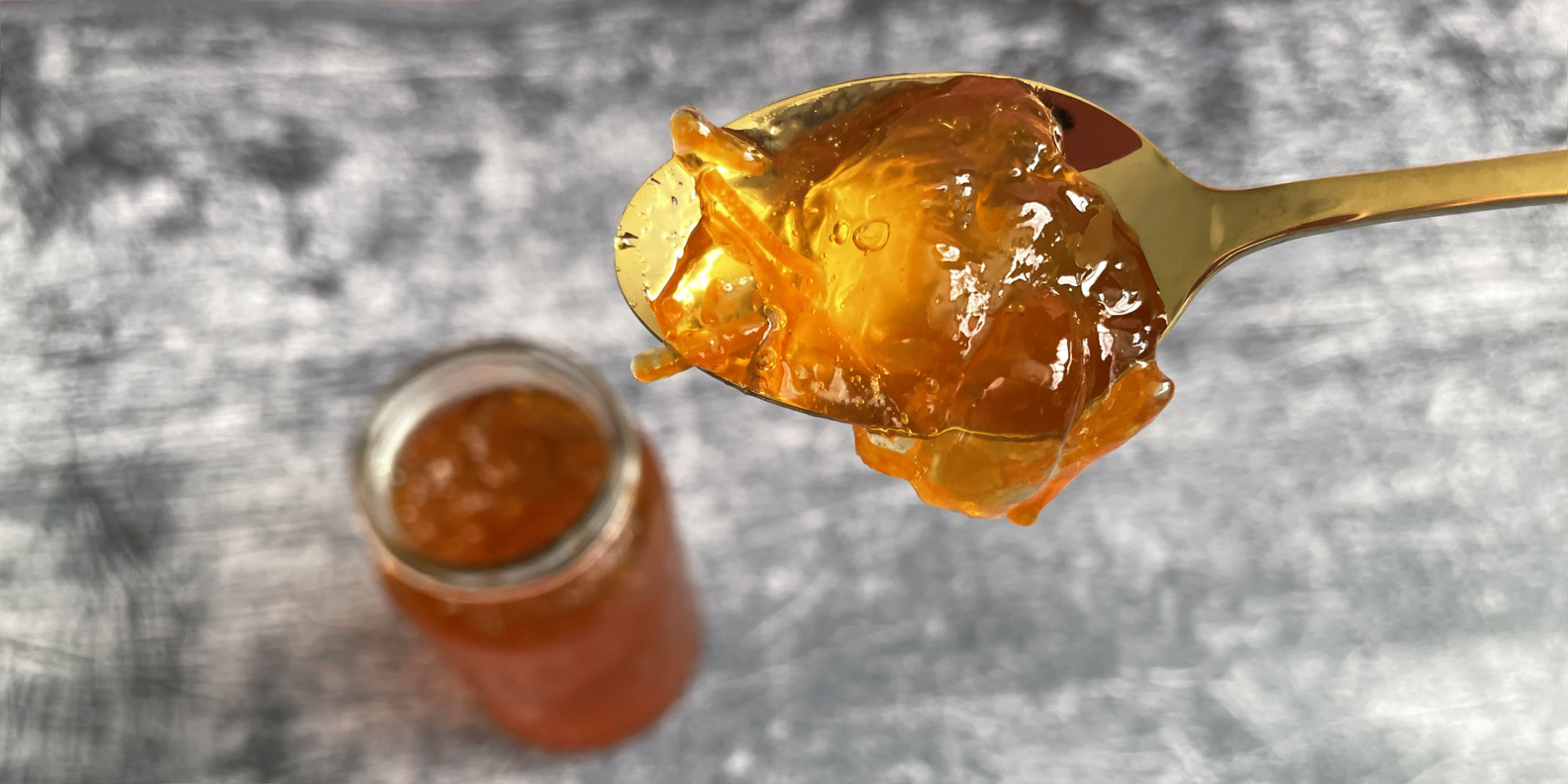Seville orange season coincides perfectly with the darkest, coldest days of winter here in the northern hemisphere, and the smell of bitter oranges and sugar bubbling away and filling the house with warmth is an antidote to the frosty mornings.
I had never made marmalade before, but a post from Rekha’s Garden Kitchen somehow awakened in me the desire to try. I had said that this year would be the year that I tried my hand at making jam, and I have had my family saving jars for me for that reason, but once I found that seville oranges were readily available in the online supermarket that I use, marmalade jumped to the front of the queue.
I was going to attempt to make it in my largest saucepan, but I’m glad that I sprung for a maslin pan, as in retrospect my largest saucepan would have in no way been big enough.

By far the most labour-intensive part of the marmalade making day was processing the oranges. I’ve since learned that there is another method you can use where you simply quarter the oranges and boil them as is, and shred the peel afterwards, but I took the long route. In a way I think this helped familiarise me with the process and the function of each of the constituent parts of the seville orange in the making of marmalade, and every single part is used; the peel, the pith, the seeds, the flesh, and the juice.
I squeezed each of the thick skinned oranges using an old fashioned twist juicer. Using a small serrated knife I separated every scrap of pith from the peel, as if I were filleting the bright orange crescents from their fibrous white inners. I cut every single strip of that perfectly clean orange peel with the same knife, and all told the process took me about 3 hours just to prep the fruit. It was a Saturday, and time was relaxed.
The two hours spent boiling the juice, peel and water, with the pith, squashed inner flesh and seeds tied up in a muslin bag, seemed to drag time longer and thinner, because I was nervously excited to get to the transformation stage.

Once the house was filled with the warm bitterness of the oranges and they had been cooking down for two hours, I had to let it rest a while, until the contents of the muslin bag left on a plate to drain were safe to handle. It was still very, very hot, and so I used two pyrex bowls, one just a bit smaller than the other, to squeeze the fabric parcel and extract all of the natural pectin. Once most of it was out I used my hands to try and squeeze a bit more, but really I think the bowls actually did a fine job of it, and were far more comfortable to hold.
Adding the sugar was the fun part. Then the job of boiling and timing and testing, and hoping for the best could begin. I’m actually not very good with hot things, and they cause me great anxiety, so 2kg of boiling sugar and juice was a bit nerve-racking to start with, but luckily the size and shape of the muslin pan kept all of the contents where they were supposed to be until the magical 104ºc marker was reached. Once the crinkle test on a frozen plate gave the wrinkling skin that was desired, the marmalade left to settle for 20 minutes before being bottled up into the hot, sterilised jars that were waiting.

I made seven jars in all. By the time I took these pictures one had already been opened at home and one sent back with my parents after they visited on the Sunday. Despite its 20 minute resting time before being put into jars, the peel has risen to the top of the jars, but that’s not a problem and can be stirred in to the body of the marmalade as it is being used.

When I put the marmalade into the jars it was still very fluid, so I had to trust in the process of extracting the natural pectin from the fruits and just hope that it would set enough to spread on toast, and to my absolute relief it set perfectly.

Now, the truth of it is, I don’t like marmalade. In fact, I can’t stand the stuff. To me it tastes like the most astringent perfume accidentally sprayed near the taste receptors. I think I may be one of those supertasters because I can in no way understand how people like the taste of things like marmalade, or wine. But 7 year old Bean loves marmalade and enjoys it most mornings, so the first jar of home made marmalade (or mummylade, as he has called it) is open and is being enjoyed for breakfasts already.
I used Rekha’s Seville Marmalade recipe, cross-checked with Delia’s marmalade notes for wider context for a newbie maker. I made one small deviation from the recipes and that was to add the juice only of two large sweet oranges to the pan, topped up with water to make 2¼ litres of liquid added to the seville juice. I thought that this might take away some of that bitterness, but who knows? It certainly made a richly coloured and deep tasting marmalade, and now I have a bit more confidence behind me whilst I wait for jam season.
